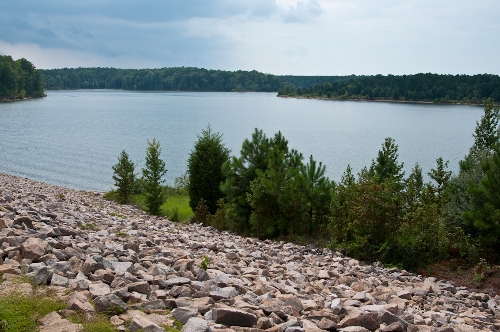A new change to how the city deals with issuing drought water restrictions should keep the false alarms to a minimum.
Currently, water restrictions kick in automatically when Falls Lake drops to 50 percent. City officials say the new system will look ahead for water use and take the next couple months’ anticipated water use into account.
For example, in the fall or winter it’s OK for water levels to fall lower in the lake because residents aren’t watering lawns and filling pools. But in the spring, when Falls Lake should be filling up for high water use in the summer, the city could put water restrictions in effect before the lake drops to 50 percent.
Raleigh Environmental Coordinator Ed Buchan explained that Falls Lake, like all lakes, have a natural cycle of filling and draining throughout the year. While the lake is lower in the summer, it refills in the winter, coming back to capacity by early spring.
The city used historical data for the past 82 years, focusing on the past 30 to account for any possible impacts from climate change.
The new model is “adding an element of seasonality to your drought management plan,” Buchan said.

Boaters enjoy Falls Lake.
The new plan will enable city staff to watch the water levels earlier in the year so that restrictions can be made before a serious problem occurs during the drier months.
It also keeps the city from issuing water restrictions when there isn’t a looming drought.
In the past, the city has issued water restrictions when it wasn’t necessary, resulting in a loss of revenue. While the city urges residents to use water efficiently, the city needs residents to use water in order to pay the bills.
More information on Raleigh’s water conundrum.
Using “extremely unaudited” numbers, Buchan explained that the city generates about $11,000 per million gallons of water.
“So, if we didn’t sell, say 5 million gallons on any given day due to water restrictions, that would cost us approximately $55,000 in anticipated revenue,” he said in an email.
Figuring out exact numbers is difficult, Buchan said, because the city has so many different water rates.
Buchan said that city never really recovered from the 2008 drought, which is why so many water rate increases have been implemented during the past few years.
It also keeps people from getting complacent. Fewer false alarms should help the city get a reduction in water when really necessary, he said.
“If you’re constantly going into drought restrictions, people get desensitized,” Buchan said.
While the Midwest is tackling the worst drought since the Dust Bowl, Buchan said Raleigh is in good shape. He said visitors to Falls Lake might notice that water levels seem low, but that’s all part of the lake’s ebb and flow.
